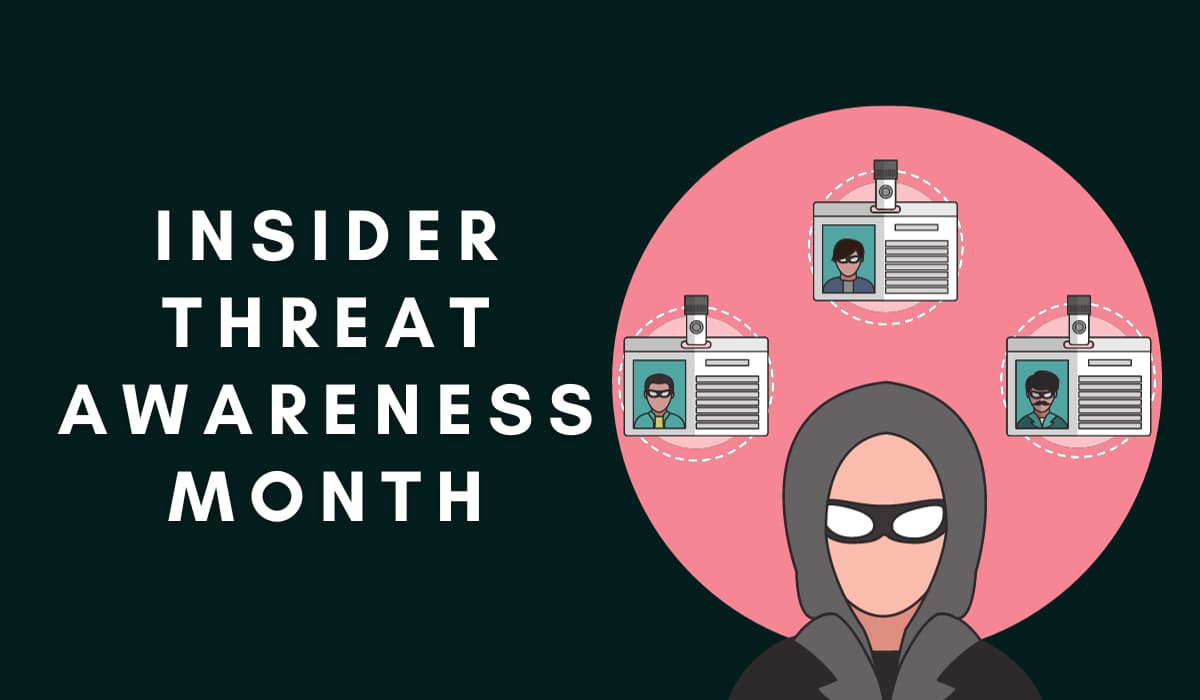As September dawns upon us, so does the annual Insider Threat Awareness Month in the United States. This dedicated month serves as a crucial reminder for organizations to remain vigilant against a potential danger that often lurks within their own ranks – insider threats.
While we’d like to believe that our employees and colleagues are always on the same page when it comes to the security of our organization, reality often paints a different picture. This article delves into the significance of Insider Threat Awareness Month and explores effective strategies that organizations can employ to detect and mitigate these often elusive threats.
Understanding the Insider Threat
An insider threat is essentially any potential risk posed to an organization’s security and data integrity by individuals who have access to internal systems, data, and information. These individuals can be employees, contractors, or business partners.
Unlike external threats that are more visible and easier to anticipate, insider threats often go unnoticed until damage has already been done. The motives behind such threats can range from financial gain to personal grudges, and their actions can include data theft, fraud, or unauthorized data access.
Recent years have seen several examples of insider threats that resulted in data breaches and financial damages, including the following:
- Shopify Suffered Data Breach Because of “Rogue” Employees
- Insider hack Marriott hotel reservation system; slash rate up to 95%
- Ex-employee stole secrets of Israeli spyware firm for dark web deals
- Inside job: Bithumb crypto exchange hacked again; loses $20 million
- Cola-Cola breach: ex-employee stole hard drive with 8k workers’ data
- Pervert Yahoo employee hacked 6,000 accounts using internal system
- HackerOne Fires Employee for Stealing Reports, Collecting Bug Bounties
- Banker jailed for helping criminals who stole millions using Dridex malware
The list goes on…
Importance of Awareness
Insider Threat Awareness Month underscores the importance of educating employees and stakeholders about the existence and potential consequences of insider threats. Many individuals within organizations may not even be aware of the risks posed by insiders. Raising awareness through training programs, workshops, and informational campaigns is the first step in preventing insider threats.
Effective Detection Strategies
- Behaviour Analytics: Implementing behavioural analytics tools can help organizations detect unusual patterns of behaviour among employees. These tools can monitor activities such as file access, data transfers, and login times to identify anomalies that may indicate a potential threat.
- Access Controls and Least Privilege Principle: Limiting access rights to only what is necessary for an employee’s role, as per the least privilege principle, can help minimize the potential for insider threats. Regularly reviewing and updating access controls is essential.
- Employee Training: Conduct regular training sessions that highlight the importance of security protocols and the consequences of insider threats. Employees should be aware of the signs and risks associated with malicious behaviour.
- Incident Response Plans: Organizations should have well-defined incident response plans in place. These plans should outline steps to be taken in the event of a security breach, including actions specific to insider threats.
- Monitoring and Auditing: Regularly monitoring and auditing internal systems and data access can help detect suspicious activities early. Automated monitoring tools can alert security teams to potential threats in real-time.
- Employee Assistance Programs (EAPs): EAPs can provide employees with a confidential avenue to report concerns or grievances, reducing the likelihood of disgruntled employees resorting to insider threats.
To highlight the importance of Insider Threat Awareness Month, Michael Orozco, Managing Director of SECOPS, Infrastructure, and Innovation at MorganFranklin Consulting, told Hackread.com that,
“Many organizations have the tools to prepare for insider threats but often overlook them. Employee agreements typically grant the company rights to monitor activity on company-owned equipment, which can reveal suspicious behaviour like unauthorized data access or unusual web activity. Additionally, AI is increasingly efficient in identifying insider threats by tracking employee behaviour, including typing patterns and keystrokes.”
Michael Orozco – MorganFranklin Consulting
To gain a deeper understanding of the grave dangers presented by insider threats and to be able to identify and report suspicious activities promptly, consider exploring the National Insider Threat Awareness Month website hosted by the US government. Additionally, valuable resources can also be found on the web page of the National Insider Threat Task Force.
Conclusion
Insider Threat Awareness Month serves as a timely reminder for organizations to take proactive measures against the often underestimated danger of insider threats. By raising awareness, educating employees, and implementing robust detection strategies, organizations can significantly reduce their vulnerability to these internal risks. The key to mitigating insider threats lies in a combination of technology, education, and a culture of security that permeates every level of the organization.









